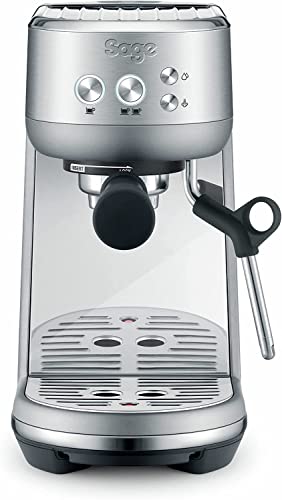What to Look For in a Commercial Espresso Machine
When you are looking to purchase a commercial coffee machine, there are a number of factors to take into account. The volume of your cafe, the intended use for service, and barista's experience will determine which espresso machine is best for your business.

Double boilers provide the capability to brew and steam simultaneously. It also reduces the time between pulls. Proportional-integral-derivative (PID) temperature control manages on/off cycles for optimal boiler temperatures.
Productivity
A commercial espresso machine is able to handle a higher volume of coffee than a home machine. A domestic espresso machine to function in a professional environment would be a recipe for disaster.
A commercial machine of the highest quality can serve up to 100 cups of coffee per hour in peak times. This can be a great help in busy offices, as it will stop employees from having to wait around to get their coffee.
A coffee machine in the workplace can assist workers in forming bonds with each other. Teams of employees often take turns getting coffee for one another, which could encourage collaboration and teamwork in the workplace. A dedicated coffee area could help new employees feel more comfortable in their workplace and break down the barriers between them, senior employees and other workers.
Commercial espresso machines come in a variety of sizes to accommodate different requirements. Certain models are fully automated, while others can pre-program espresso shot sizes so that the operators don't have to guess the correct size. This is particularly important for businesses with untrained baristas since incorrect shots can greatly impact the quality and taste of espresso brewed. It is also advisable to buy commercial espresso machines that are made of ethically sourced materials that help the communities in which coffee beans are grown. This will ensure a top quality product, and reduce the negative impact on the environment.
best espresso machine under 200 can cost as much as a small car. They're also designed to churn out a multitude of drinks and shots in an entire day. This high volume operation can result in unique health and safety risks for employees, which is why it's important to consider the risks that could be associated with a commercial espresso machine.
Remember that commercial espresso machines tend to use warm water. This can encourage the growth of bacteria. Inefficiently maintained machines that are not regularly cleaned and descaled can build up spent espresso. This can cause it to go rancid and may cause illness if consumed by customers. A commercial espresso machine with a steam wands that are not sealed can allow bacteria to grow in the milk that is frothing.
When choosing a commercial espresso machine it's important to consider the kind of drinks you'll serve and how many cups your space can accommodate. You'll also want a machine that offers automated features, which make it much easier and quicker to serve your customers your preferred coffee drink. In addition, you should look for a warranty that covers parts and labor so that any technical issues can be addressed quickly and effectively.
Energy Efficiency
Commercial espresso machines require significantly more power than the home models. This is due to the fact that professional espresso machines have larger frames and larger boilers to support the multiple group heads required for typical cafe production. These machines also operate at a much greater temperature at ambient temperatures and are typically in an indoor location (such as the cafe or restaurant) where the electronics could overheat quickly, resulting in machine failure.
The boiler of commercial espresso machines is heated and holds pressurized water supplied by an electric pump. The water is used to make steam and brew espresso. The boiler is made up of several copper tubes that are heated by electric elements. When the brew level sensor senses that the water has reached its goal level the solenoid valve opens to allow the boiler to be filled with fresh water. The heating element is shut off.
There are four variations of espresso machines that are distinguished by how they are able to steam and brew with steam: TB (brewing only), TX (twin boilers) HX, DA (double automatic). TB and TX machines provide stable brew temperatures, whereas DA offers rapid steaming using only one boiler. HX machines are utilized by many cafes since they provide the highest quality in both brew and steam temperature.
Maintenance
Commercial espresso machines need regular maintenance, just like cars. They must be maintained to function efficiently and smoothly. If you take the time to keep your machine in good condition, it will give you a better tasting espresso and last longer.
It's a routine to clean your espresso machine, however you should also pay attention to the parts that require more thorough cleaning. There will be a residue of coffee grounds and milk products in the machine, which can degrade various components over time. Regular cleaning helps prevent this and keeps your espresso machine operating at optimally.
The majority of commercial espresso machines require descaling every three months. This process requires more steps than regular cleaning, and you'll need to read the manual to ensure you're following all the instructions. The solution used to decal the tank dissolves the scale. You'll require a container to complete this task. In certain models you may also require a container to be placed under the coffee spouts. Then, follow the instructions for your particular model.
A water filter change is another maintenance task. This is something that could be overlooked, but it's important to keep in mind so you don't get a build-up of mineral deposits. Also, you should look for calcification within the spray head, which can be difficult to get rid of.
